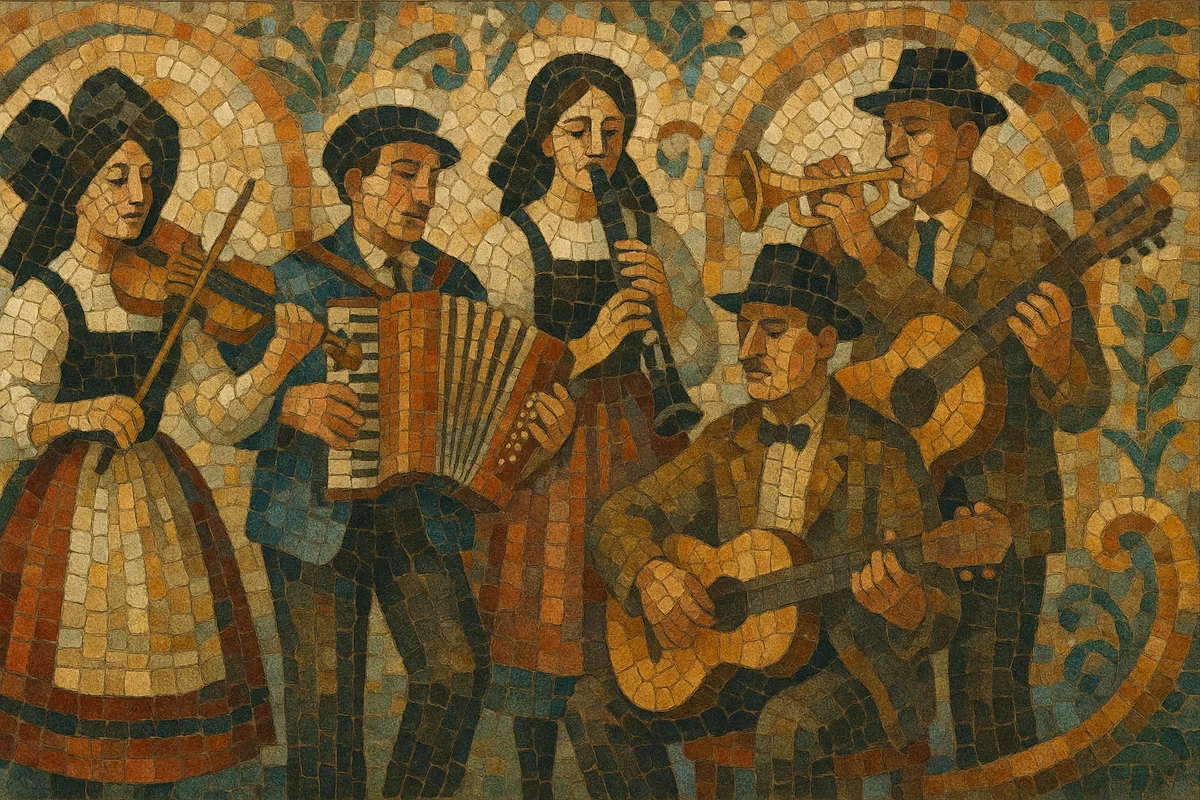Alsatian folk music is the traditional music of Alsace, a borderland region between France and Germany where French and Alemannic dialects coexist. It is dance‑centered, village‑based music closely tied to wine festivals, processions, and community celebrations.
Typical ensembles feature diatonic button accordion, fiddle, clarinet, brass (trumpet/trombone), guitar or zither, and simple percussion, playing waltzes, polkas, schottisches, mazurkas, and local round dances. Songs are commonly strophic, sung in Alsatian dialect (and sometimes French), and celebrate everyday life, viticulture, seasonal rites, and regional symbols such as the stork and the Rhine.
Stylistically it blends Central European dance forms and Germanic melodic idioms with French chanson sensibilities. The performance practice ranges from intimate “Stubemusik” (parlor music) to lively outdoor bands for village squares and fête days.
Alsatian folk music grew out of rural dance and song traditions that circulated orally in farmsteads, inns, and village squares. By the 19th century, under the broader European folk‑song collection movement, local repertoires of waltz, polka, schottische, mazurka, and regional rounds were documented and standardized for social dancing and community bands.
Alsace’s status between France and the German states shaped its music: Germanic dance types and modal turns blended with French chanson and salon tastes. Brass and clarinet parts reflect Central European town‑band practice, while diatonic accordion and fiddle anchored small dance ensembles (often called “Stubemusik”).
Wars, border changes, and urbanization affected transmission, but village festivals (notably Ribeauvillé’s “Pfifferdaj” minstrels’ festival and Seebach’s “Streisselhochzeit”) preserved performative contexts. From the 1970s folk revival onward, local dialect songs and dance bands reemerged on stages, community centers, and wine‑route events, sometimes incorporating guitar‑led arrangements and light amplification.
Today, Alsatian folk is performed by community ensembles, dance troupes, and dialect singer‑songwriters. It coexists with folk‑pop interpretations for regional tourism while remaining a living practice at fêtes, weddings, and vintners’ celebrations. Its accent on conviviality, round dances, and sing‑along refrains continues to define the music’s identity.


